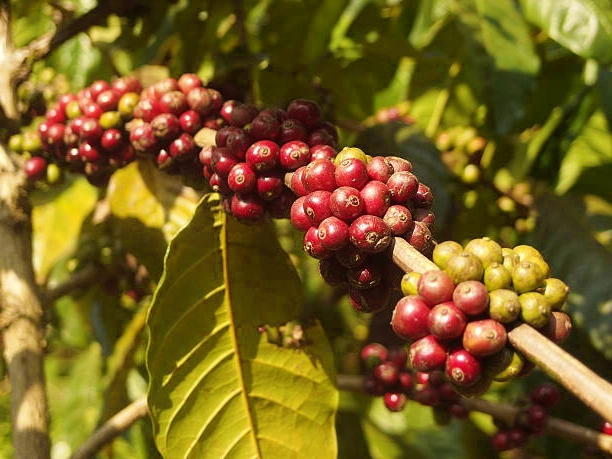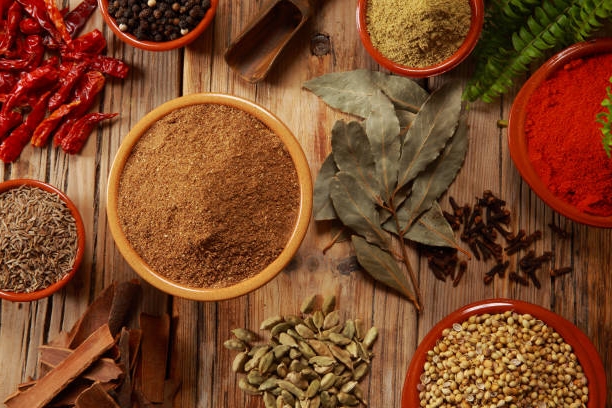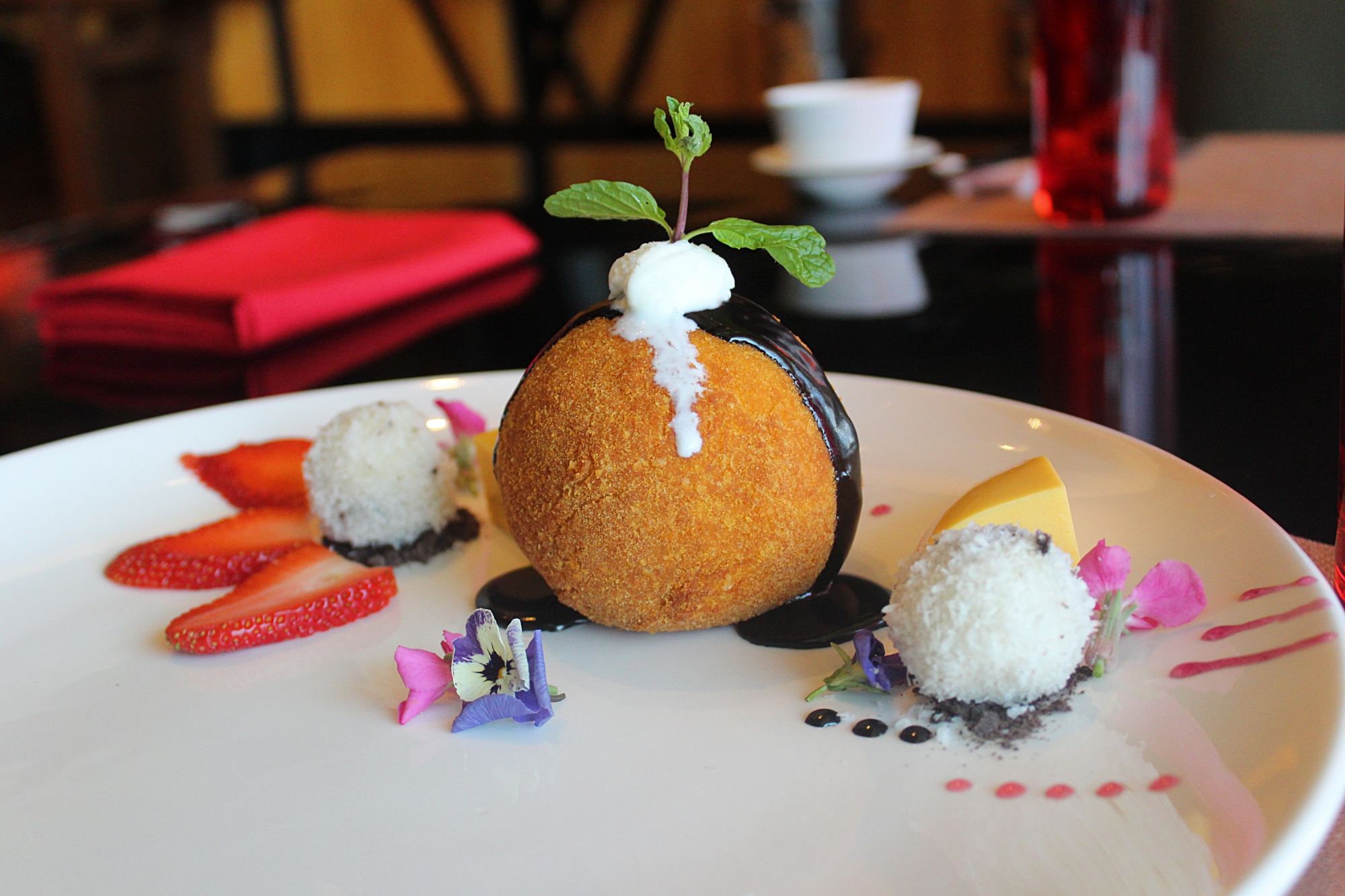Bean to Brew: The Aromatic Coffee History of Coorg
When people say “let’s have coffee”, it has nothing to do with actually having coffee – it’s all about spending quality time together. So let’s explore the fascinating history of Coorg, which produces 40% of India’s coffee and continues to bring people together!
Strolling through the lush terrain of Coorg, a hidden oasis in Southern India, I find myself enveloped by the captivating sights and smells of the coffee harvest. I take in the panoramic view of the rolling hills, dotted with trees laden with delicate white flowers and clusters of ripe, burgundy-hued coffee beans. The heady jasmine-like scent of the blossoms saturates the air, and the landscape is alive with pickers carefully harvesting the small, precious beans that fuel the world’s coffee craze from dawn till dusk. From its humble beginnings as a tiny seedling, Coorg has cultivated an impressive, full-bodied coffee history.
Table of Contents
It’s Truly a Cup of History
As I pour the steaming hot cup of Coorg-grown coffee, I can’t help but feel the history that it carries with it. The remarkable saga of coffee cultivation began with Baba Budan, a sufi, who smuggled 7 raw beans in his beard – a number considered sacred in Islam – out of the port of Mocha in Yemen in 1670. Baba entreated his friends to take the beans and spread them far and wide, especially in gardens and backyards. And since then, the lofty elevation and warm climate of Coorg have made it an ideal place for producing some of the finest coffee beans in the world.

The beans blossomed, and the area soon gained prominence in coffee production, earning the title of ‘the King of Coffee’ – and rightfully so. Coorg coffee can be likened to an art form – the kind that requires a deft hand and a keen eye. Each bean is harvested with the utmost care and dried in the warm rays of the sun, producing speciality-grade coffees with rich and complex flavours, making it the ‘Bourbon of India’.
Bean to Brew – Intense Arabica to Bold Robusta
Coorg, the Mecca of coffee connoisseurs, is blessed with some of India’s most exquisite and sought-after coffee estates. With its rich abundance of Arabica and Robusta varieties, Coorg also houses the coveted ‘Typica’ and ‘Bourbon’ beans. These plants boast four sets of chromosomes and large, dark-green oval leaves. The coffee fruits usually take 7-9 months to reach maturity, bar the rare ‘pea berry’ that requires a shorter period of growth. On the other hand, the Robusta variety is a resilient and hardy type, reaching heights of up to 10 metres, and its round-shaped fruits take 11 months to ripen, with the oval-shaped seeds within being notably smaller.
With its perfect balance of skilful processing, roasting, and expertly-crafted brewing techniques, these delicious brews are taking the world by storm. To experience the full flavour of Coorg coffee, try the traditional method – steeping ground Coorg beans in hot water and then pressing them through an Indian filter. The resulting cup will be strong and flavourful, leaving you in awe of its boldness and complexity. For a more subtle and sophisticated taste, try brewing your Coorg beans with a French Press or the pour-over method for a deliciously aromatic experience.
Fresh Coffee with Aeropress
To get the same taste of coffee as fresh coffee from a coffee plantation of Coorg using an Aeropress Coffee and Espresso Maker, follow these steps:
1. **Grind your coffee beans fresh.** Use a burr grinder to grind your coffee beans to a fine grind, similar to the grind you would use for espresso.
2. **Heat your water.** Bring your water to a temperature of between 195 and 205 degrees Fahrenheit (90 and 96 degrees Celsius).
3. **Rinse your AeroPress.** Place the filter in the AeroPress cap and rinse it with hot water. This will help to remove any papery taste from the filter.
4. **Add your coffee grounds.** Add 18-20 grams of coffee grounds to the AeroPress chamber.
5. **Add your water.** Pour 60-70 grams of hot water over the coffee grounds.
6. **Stir gently.** Stir the coffee and water together to combine.
7. **Place the AeroPress cap on the chamber.** Flip the AeroPress over and place the cap on the chamber. Be sure to align the arrow on the cap with the AeroPress logo.
8. **Plunge the AeroPress.** Slowly and gently press down on the plunger to extract the coffee. This should take about 20-30 seconds.
9. **Enjoy your coffee!**
To get a taste of coffee that is similar to the coffee you would find on a coffee plantation of Coorg, you can try using a light roast coffee bean. Light roast coffee beans are typically roasted for a shorter period of time, which preserves more of the natural flavours of the coffee bean. You can also try using a slightly different grind size or brewing method to experiment with different flavour profiles.
Here are some additional tips for making espresso-like coffee with an AeroPress:
* Use a metal filter instead of a paper filter. Metal filters allow more of the oils and micro-grounds to pass through, which will give your coffee a richer flavour and mouthfeel.
* Use a higher water temperature. Espresso is typically brewed with water that is between 195 and 205 degrees Fahrenheit (90 and 96 degrees Celsius). Using a higher water temperature will help to extract more of the coffee’s flavour and oils.
* Use a shorter brewing time. Espresso is typically brewed for a very short period of time, usually between 20 and 30 seconds. Using a shorter brewing time will help to prevent your coffee from becoming over-extracted and bitter.
* Experiment with different grind sizes and brewing methods. There are many different ways to make espresso-like coffee with an AeroPress. Experiment with different grind sizes and brewing methods to find what you like best.
With a little practice, you can use an AeroPress to make espresso-like coffee that is just as delicious as the coffee you would find on a coffee plantation in Coorg.
A Caffeine-Fuelled Adventure
When in Coorg, pluck your way to one of the coffee estates to revel in the irresistible aroma of ripe coffee cherries that fill the air. Embark on a tour to 63-year-old Mercara Gold Estate’s lush plantations to discover the secrets behind the robusta and arabica beans that thrive in this region. From selecting the ripest coffee beans to harvesting, processing and roasting them, you’ll learn it all.
Likewise, nestled in the serene foothills of the Thadiyandamol, is the Palace Estate homestay that provides one with the perfect opportunity to glimpse different varieties of coffee trees and savour the hot and smoky Coorg coffee to your heart’s content. Coorg’s coffee culture is full of tradition and history, worth celebrating. The industry has provided a sustainable form of livelihood for generations and helped to shape the economic landscape of the region. So next time you’re enjoying your favourite cup of coffee, don’t forget to give thanks to the generations of farmers who made it possible.
Urban Coffee Legends
-
The legend goes that a Yemeni Sufi mystic, Ghothul Akbar Nooruddin Abu al-Hasan al-Shadhili, was on a journey through Ethiopia when he noticed few exceptionally lively birds. He tried some of the berries they had been feasting on and felt a surge of energy. Those berries were the ever-so-famous coffee cherries.
-
Another legend says that coffee was discovered by a disciple of Sheik Abou’l Hasan Schadheli named Omar. He had been exiled from Mocha to a desolate cave in Ousab where he stumbled upon a shrubbery of berries that were far too bitter to eat. In a stroke of ingenuity, Omar roasted and boiled them and created a beverage that revitalised him.
-
The third legend has it that an inquisitive goat herder once noticed his goats behaving oddly after snacking on some peculiar berries from a nearby bush. He decided to try them himself and soon discovered coffee.
Know Your Beans
-
Arabica coffee beans are like a decadent treat with notes of chocolate and sugar, and hints of fruity and berry flavours.
-
Robusta coffee beans have an intense, strong flavour, with an earthy bitterness that some might find a bit too robust.
-
Scoffing up only 2% of the world’s coffee crop, Liberica beans have a unique flavour blending floral and fruity notes with a smokiness akin to wood.
-
Excelsa has a more fruity character, plus a tartness that adds complexity to coffee blends.
The Brew
Brewing coffee is an art, and there are many techniques you can try to get it just right. AeroPress, Cold Brew, Chemex, Espresso, French Press, Moka Pot, Pour Over, Ibrik and Siphon – the choices are endless! The “Golden Ratio” is one to two tablespoons of ground coffee for every six ounces of water, but don’t be afraid to experiment and find your own special blend.
Barista – The Coffee Bartender
The National Barista Championship 2023 in Bengaluru was a star-studded event. When the dust settled, Jaseem Abbas, a home brewer, emerged victorious and will represent India in Athens for the WBC 2023. A special shoutout to Bharath Suthapalli and Mithilesh Vazalwar; they truly embody the passion of a coffee connoisseur.



